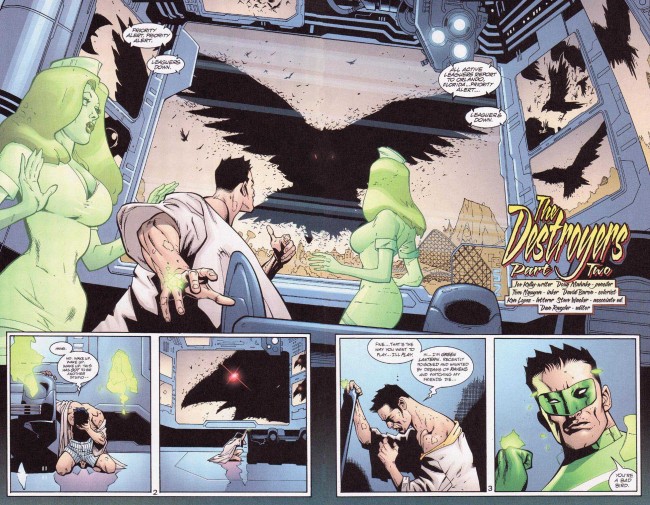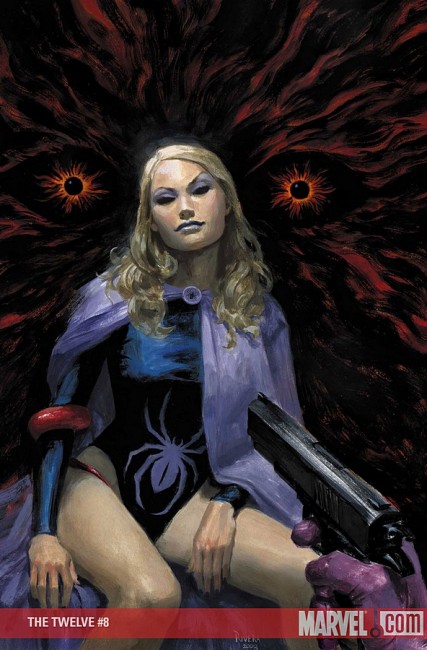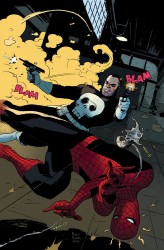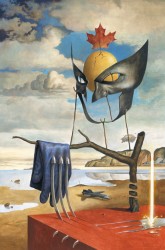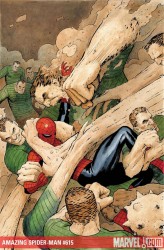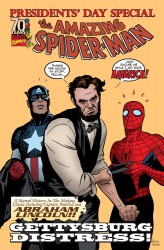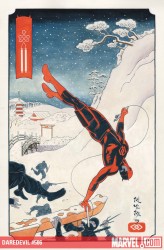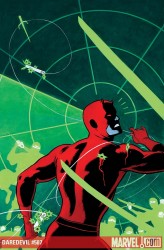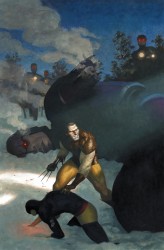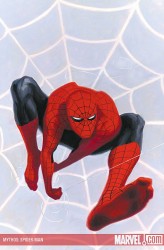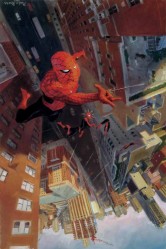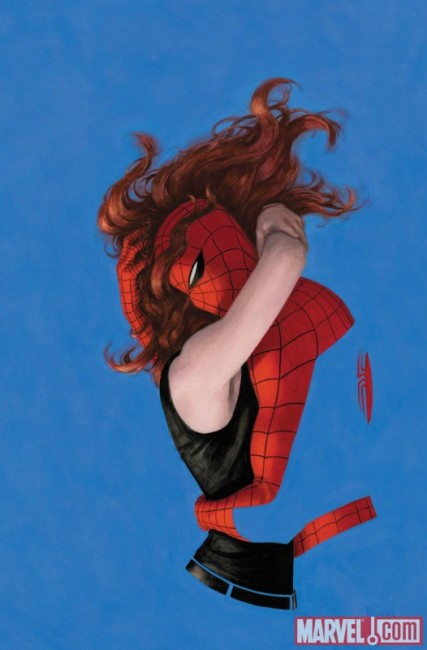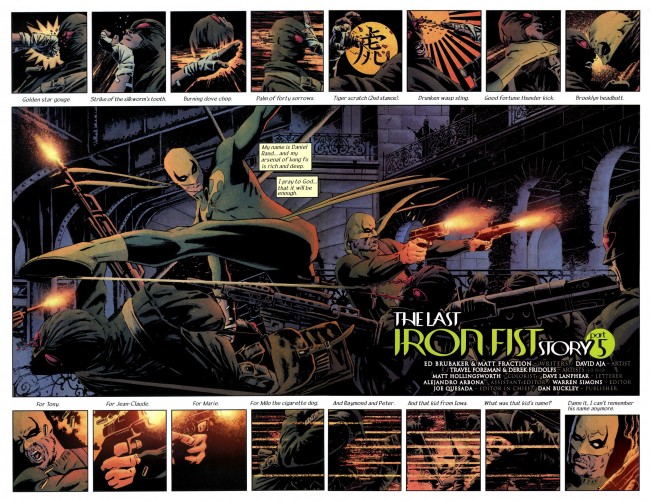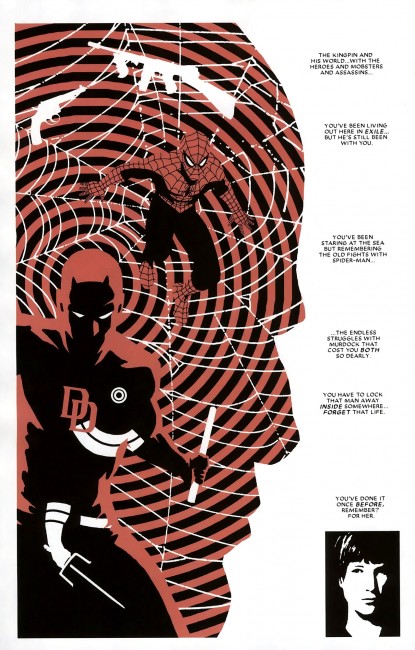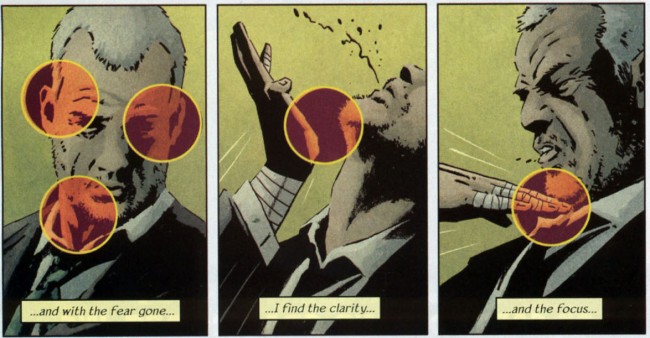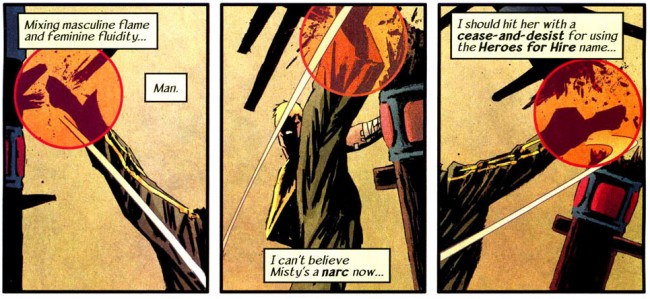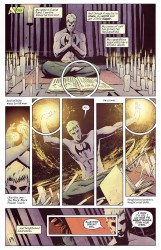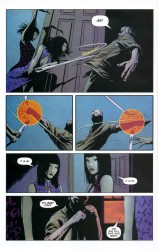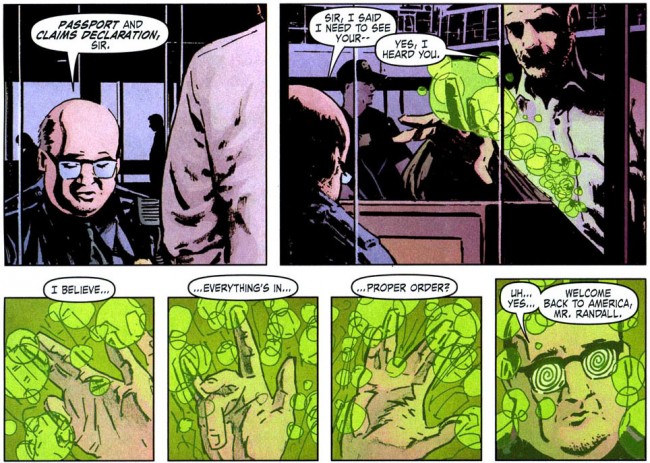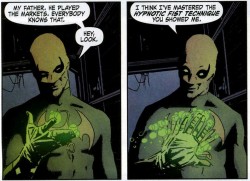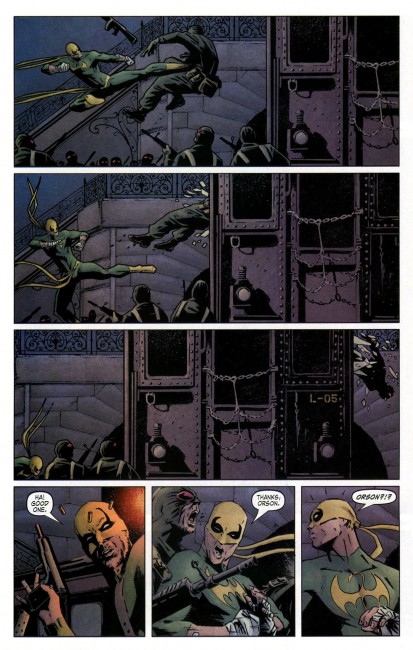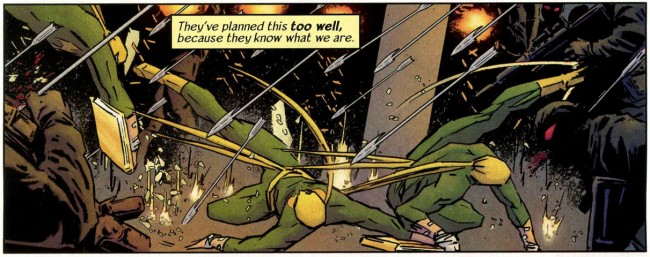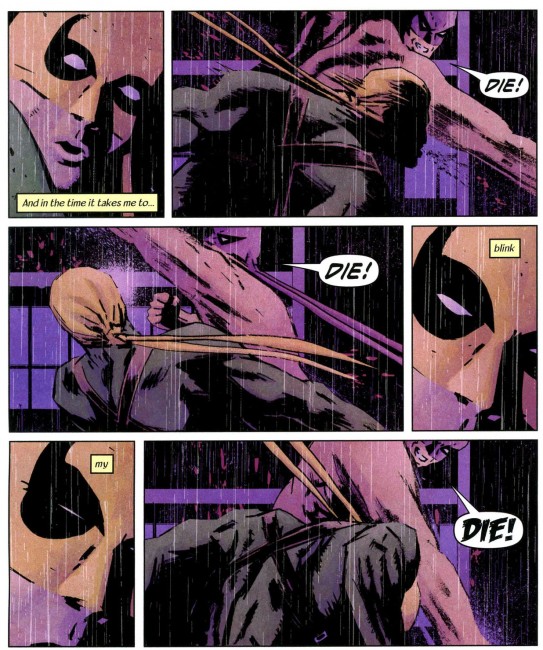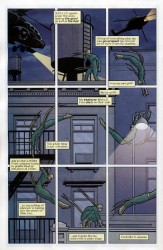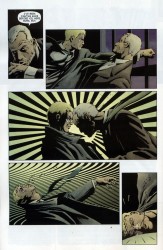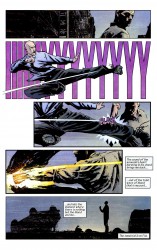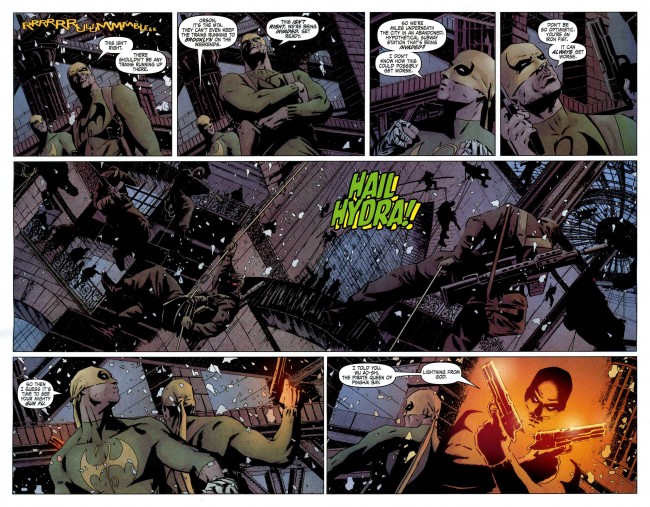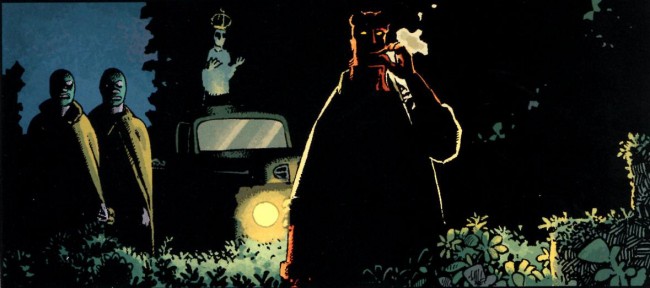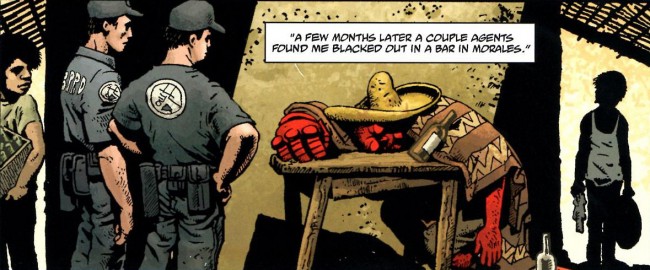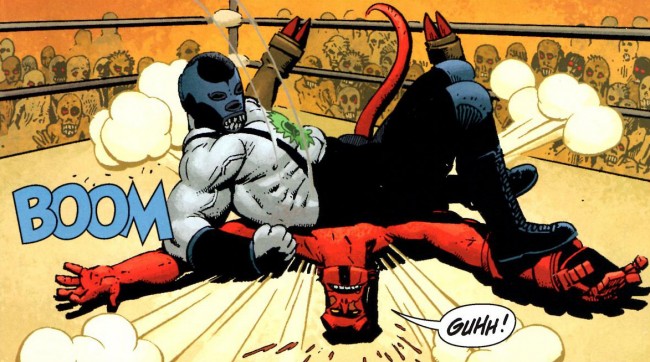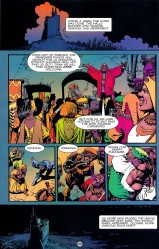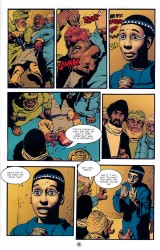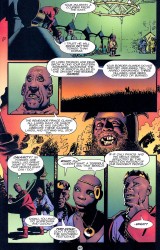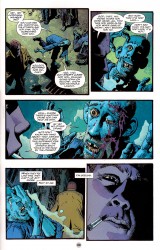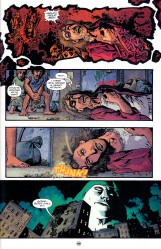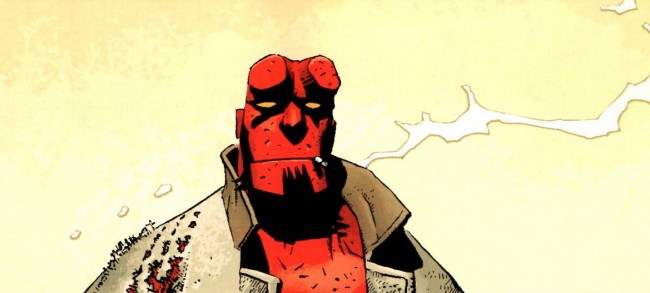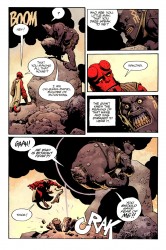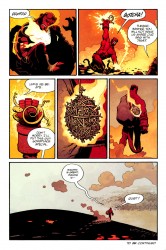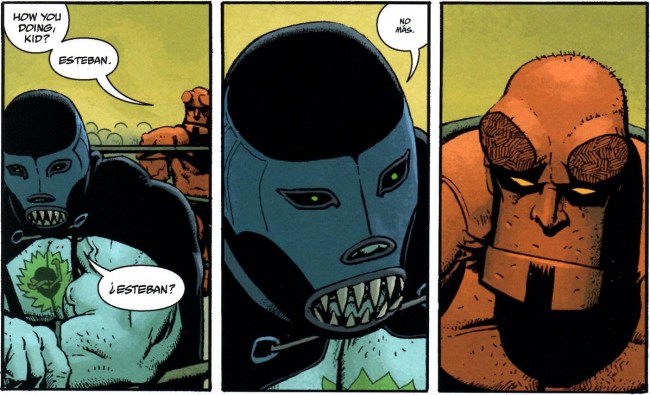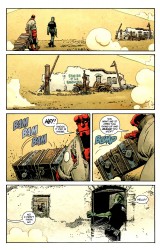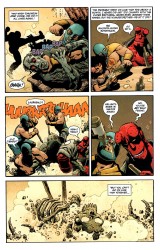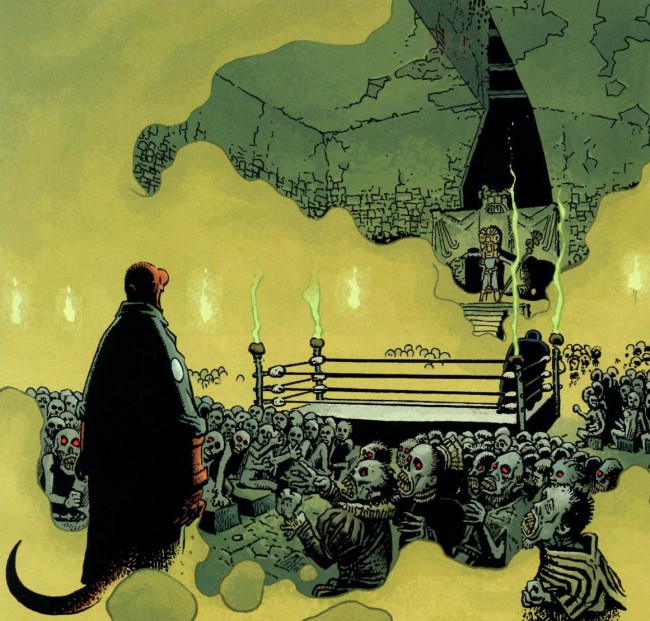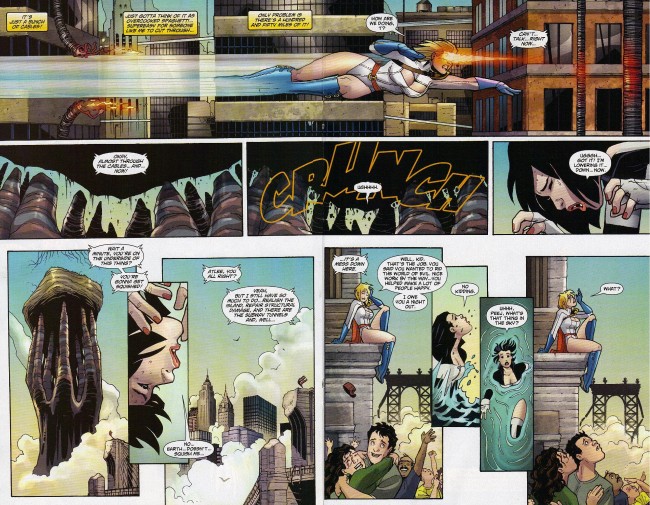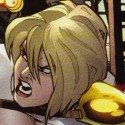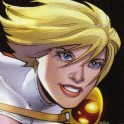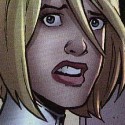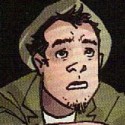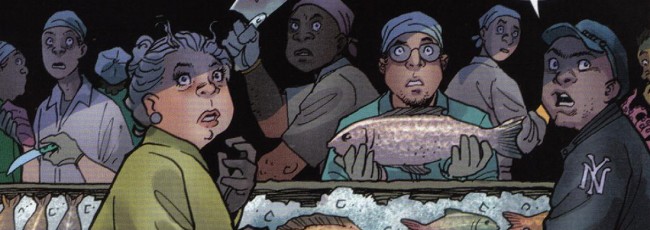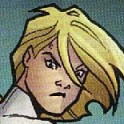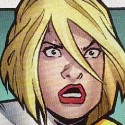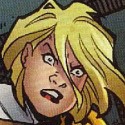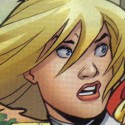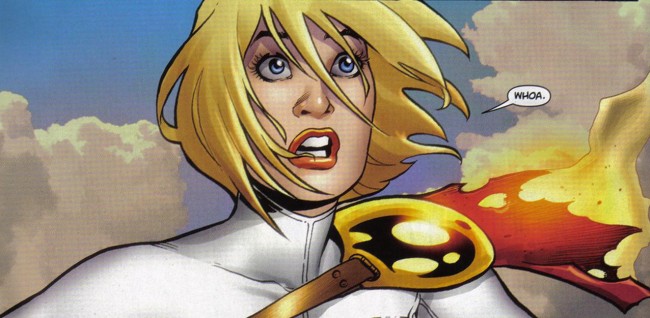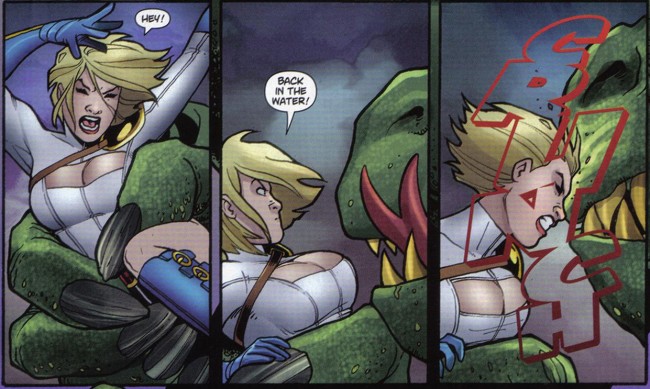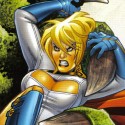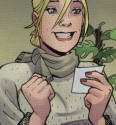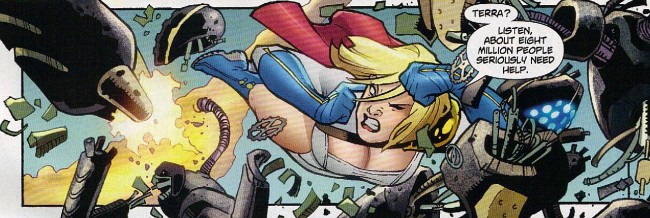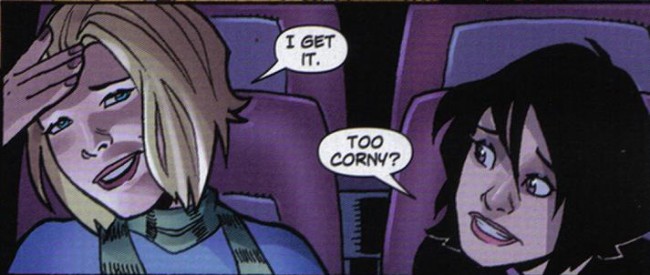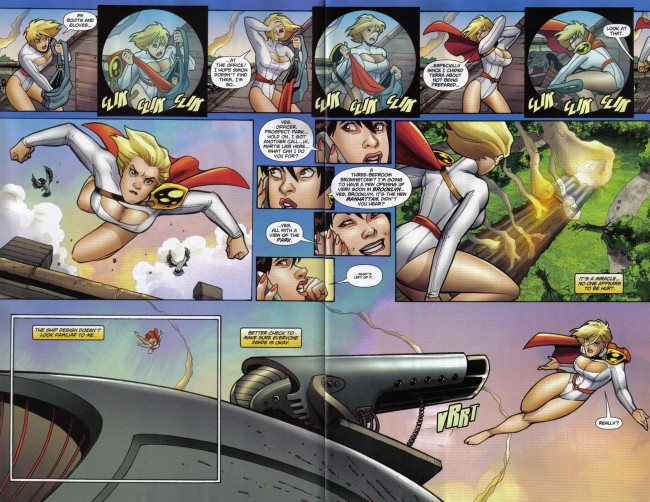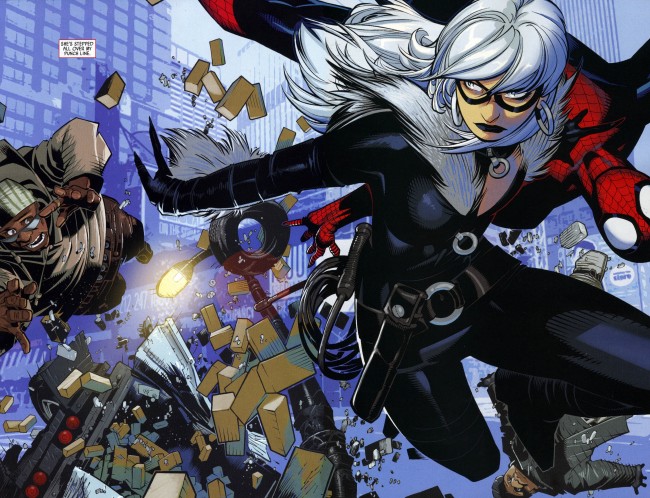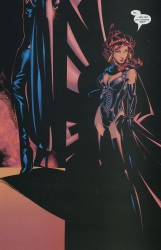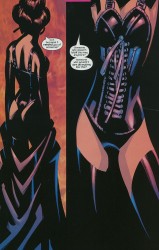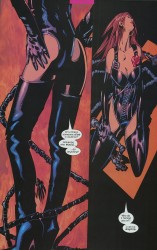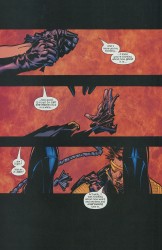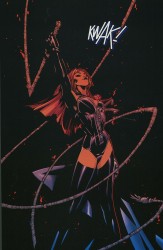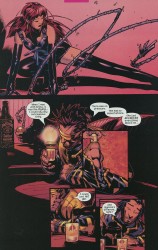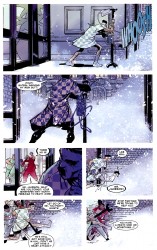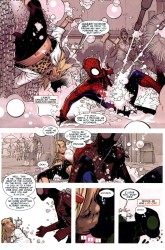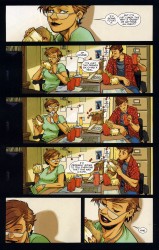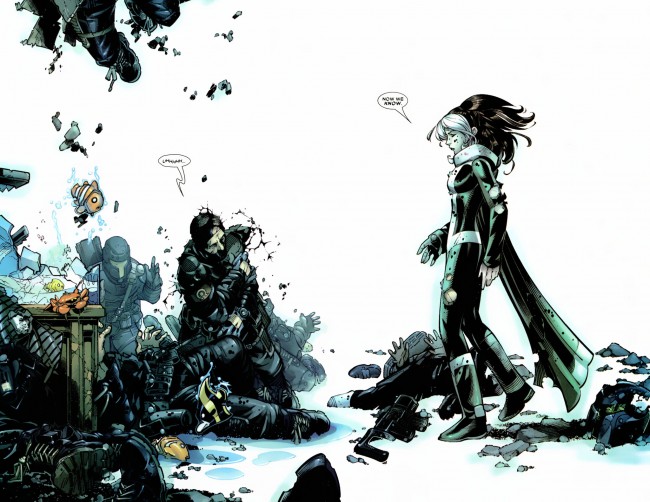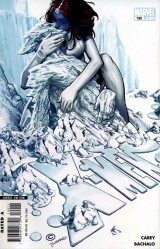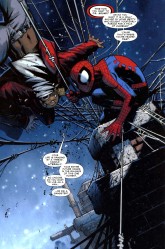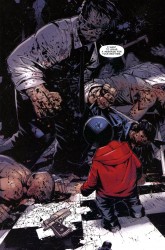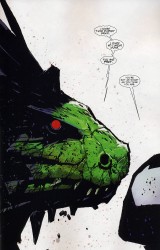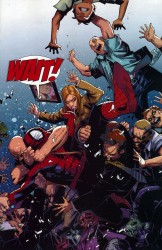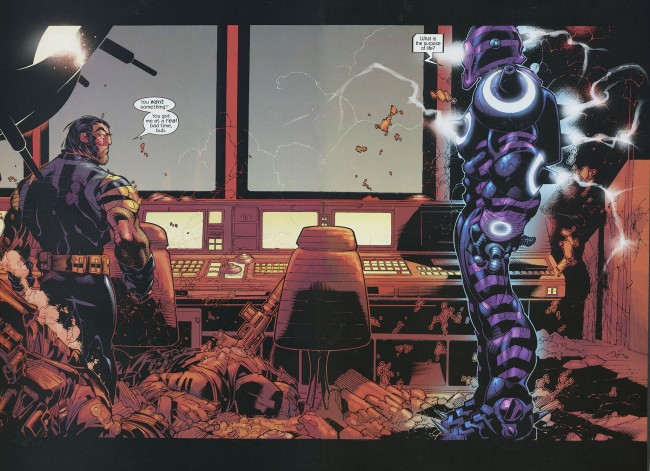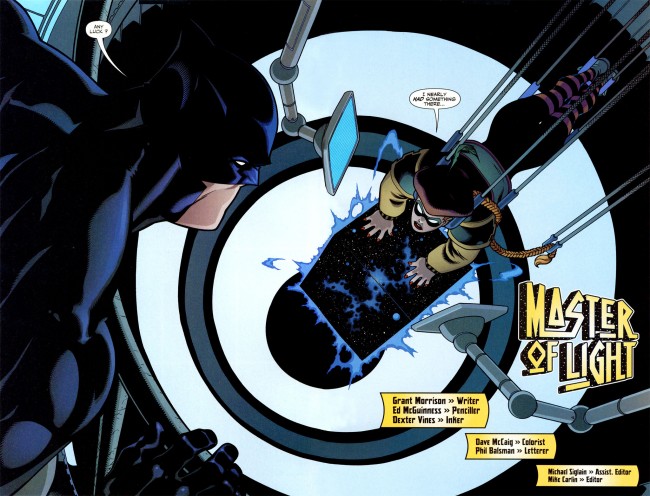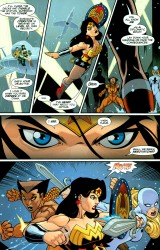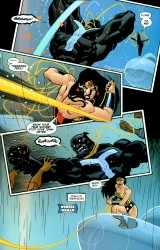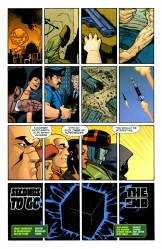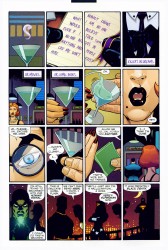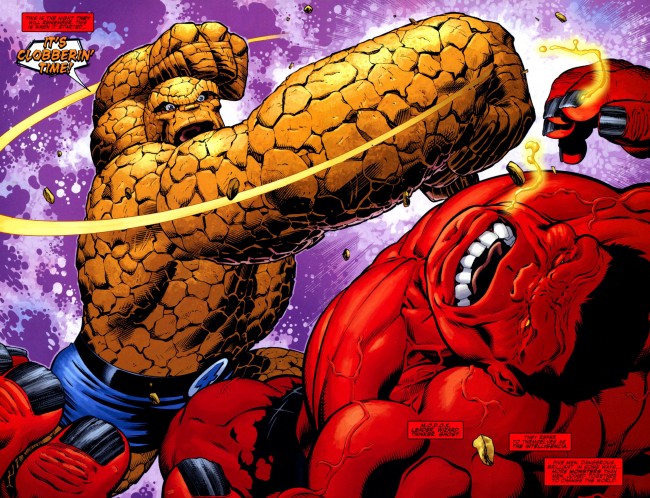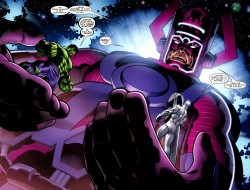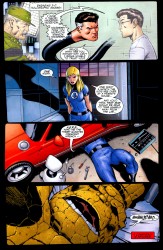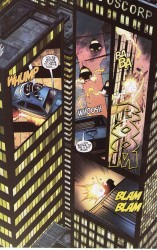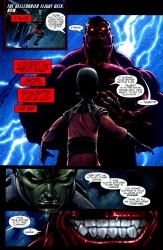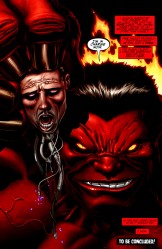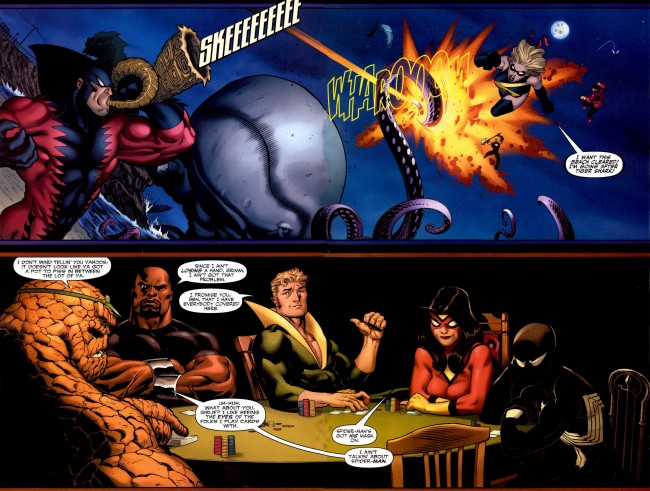
7 Artists: Doug Mahnke
July 10th, 2010 Posted by david brothers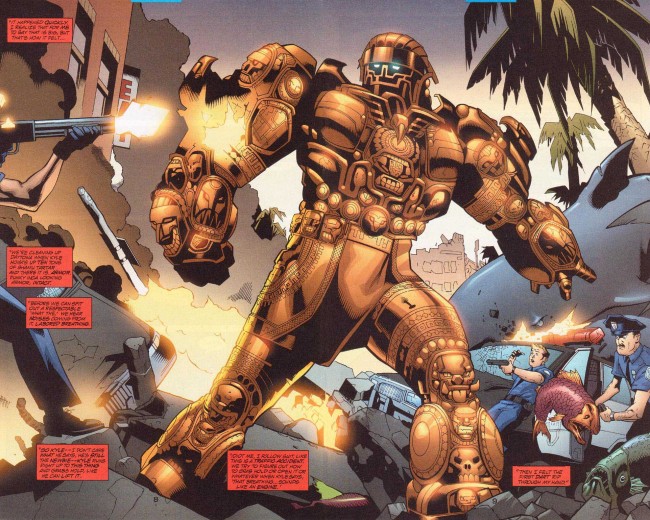
Doug Mahnke does one thing better than everyone else, and that’s draw Wonder Woman.
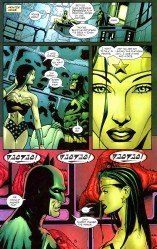
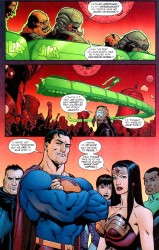
The biggest reason why he draws the best Wonder Woman is easy: the hair. It’s this very straight, wet, flat look that looks so good it should’ve become part of her official look.
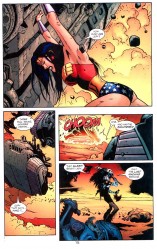
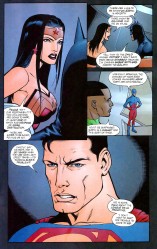
He does another thing better than most people, and that’s depict action.
Violence in comics is weird. When it’s wrong, it’s wrong, and it just looks stupid. This is particularly true of the post-Lee artists, guys who draw in the remnants of one of your typical early Image Comics styles. That sort of overly built, action figure style really doesn’t lend itself to a proper portrayal of violence. It looks like action figures moving across a page while an unseen child goes “Pow! Pow!”
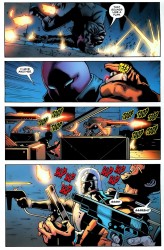
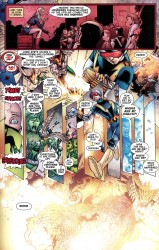
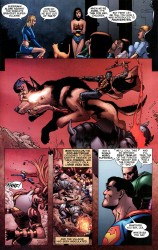
Comics art tends toward clean. Bryan Hitch, Stuart Immonen, John Romita Jr, Dan Jurgens, Mark Bagley, whoever whatever, they tend to draw these really neat scenes, clean lines, so on and so on. The action follows. It’s pretty clean and simple, and when people get bloody, it’s a very reserved kind of bloody. It’s not really that brutal. Mahnke, though. Everything this guy draws looks like it’s had a belt sander taken to it not five seconds before, and when he draws an impact, he draws it like it’s the only thing that matters on the page. You don’t even really need the sound effects at all.
Mahnke’s work isn’t interesting because of any particular attention to detail, I don’t think. It’s interesting because of how he approaches his subject matter. Some artists go for detailed draftsmanship and scale (Bryan Hitch), some for body language and realism (Frank Quitely), and some for photorealism (any artist with Photoshop and a host of garish filters). Mahnke… I think the key to his work is restraint.
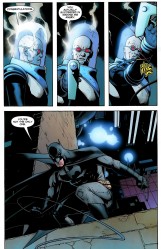
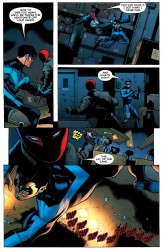
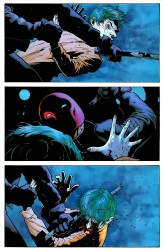
He draws his characters very muscular, just on the far side of ripped, but not the usual steroid case you expect to see in comics. They tend toward the slim, but filled out. They’re just big enough to be superhuman, but not so big that they look overdone. It’s clear that they aren’t normal, but they aren’t so abnormal that they look ridiculous. They’re just right in that sweet spot between human and super. They work so well on the page because they’re believable.
But that’s all beside the point. When Mahnke draws people fighting, it looks good. The gritty way his lines end up, the slim but powerful figures (with real weight), and his ability to capture the perfect mid-action panel are just a few reasons why. David Aja does choreography, Jack Kirby did bombast, and Mahnke is good at finding just the right moment to freeze the frame.
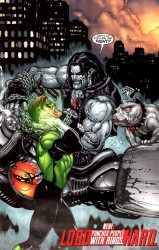
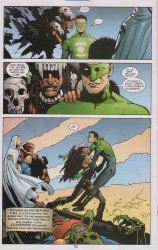
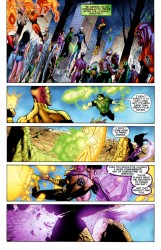
It’s all about that right moment in time. Aja captures it fluidly and about as close to “in motion” as you can get on a comics page. Mahnke doesn’t have the same style or approach to comics as Aja does, but I don’t think that his is any less effective. There’s a page from Batman: Under the Hood where Jason Todd is beating the Joker with a crowbar. The final panel on that page, where the crowbar is in direct and intimate contact with the Joker’s face, hurts. It’s that moment after the impact, after the Joker’s head has started to turn, but before Jason’s completed his swing. It’s ugly, and that specific moment might be the ugliest.
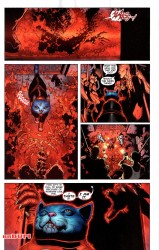
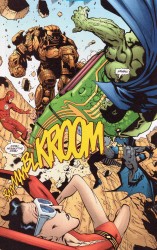
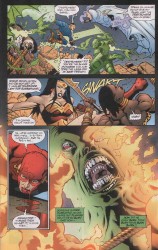
You can see it in other books, too. Kyle’s limp form as Manitou Raven stabs him in the chest in JLA: The Obsidian Age. The part in Green Lantern where Carol Ferris has Sinestro’s arm blocked and is working her way around his throat. In Final Crisis, Frankenstein taking the head off a dog while his giant wolf thing chews through Wonder Woman.
Panels are always specific moments in time. That moment has to convey whatever feelings or actions are required to create a fully realized story. Creating the perfect panel is probably pretty tough, considering that you’ve not only got to draw well, but capture a specific moment in a scene.
If you’re too late, there’s no impact, no juice. If you’re too early, it’s all still just potential energy. Getting it right… that’s something to be respected. Some artists manage to miss that killer moment almost every time. Their art is just passable, just short of acceptable, but it gets a book on a shelf so I guess it has some value to someone. With Mahnke, though… I’ve never felt like that. His gunfights (as in Team Zero), his superhero battles (Justice League Elite
), his brutal hand-to-hand (Batman), and even this sci-fi magic wishing ring stuff he’s doing over in Green Lantern
… all of it looks right. It looks like it hurts.
(And honestly, if Doug Mahnke were the only person allowed to draw Wonder Woman and Lobo, I’d be a very happy camper.)
